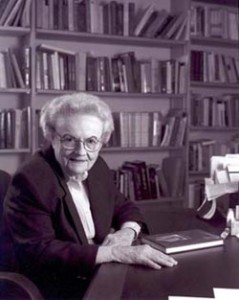
The VanArsdel Prize is awarded annually to the best graduate student essay investigating Victorian periodicals and newspapers. The prize was established in 1990 to honor Rosemary VanArsdel, a founding member of the Research Society for Victorian Periodicals, whose groundbreaking research continues to shape the field of nineteenth-century periodical studies.
The winner of the VanArsdel Prize receives $500 and publication of their submission in Victorian Periodicals Review. A list of past awardees can be found below our submission guidelines.
Applications open May 1 and are due July 1
See our awards calendar for all relevant deadlines. Please note that deadlines are subject to change and if needed, will be announced via our social media channels promptly.
Submission Guidelines
Essays should be approximately 4,000–7,500 words (or 15–25 pages), excluding notes and bibliography. Formatting should be double-spaced throughout with one-inch margins and a standard font such as Times New Roman, size 12. Please also note:
- Authors must be enrolled in a master’s or doctoral program at the time of submission. The winner will be required to provide a letter from his or her graduate program verifying student status.
- Manuscripts should not be under submission elsewhere or previously published.
- Submissions should be emailed as an MS Word attachment.
For further details about the prize or to submit your essay, contact the VPR editor.
Previous Awardees
The winner of this year’s VanArsdel Prize is Matthew Stephens (Edge Hill University) for his essay, “The Long and Short of It: Rethinking the Longevity of Nineteenth-Century Periodicals.” The committee noted, “This is an engaging account of a vital bibliographic exercise: the cataloguing and indexing of short-lived newspapers.” They praised this “well-researched and staggeringly well-documented” essay’s “incisive analysis of the successes and limitations of existing bibliographic resources on British newspapers.” The judges agreed that the essay offers “a substantive contribution to the field.”
Previous winners of the VanArsdel Prize are:
- 2022 — Alycia Gilbert, “‘Her Speech Betrayeth Her’: The New Woman and Gendered Slang in the Periodical Press“
- 2021 — Elizabeth Howard, “‘Keeping Christmas’ on the Page: the Adelaide Observer, Alice in Wonderland, and the Australian Periodical at Play”
- 2020 — Lindsay Wells, “Vegetal Bedfellows: Houseplant Superstitions and Environmental Thought in Nineteenth-Century Periodicals”
- 2019 — Louise Logan, “Drawing Species Lines: Sensation and Empathy in Illustrations of Vivisection in the Illustrated Police News”
- 2018 — Helen Sunderland, “‘Politics for Girls’: Representations of Political Girlhood in the Girl’s Own Paper and the Girl’s Realm”
- 2017 — Sharon Draucker, “‘Vibrating through all its breadth’: Musical Fiction and Materialist Aesthetics in the Strand Musical Magazine”
- 2016 — Grace Beekman, “Emotional Density, Suspense, and the Serialization of The Woman in White in All the Year Round,” and Abigail Droge, ““Always Called Jack”: A Brief History of the Transferable Skill”
- 2015 — Claire Furlong, “Health Advice in Popular Periodicals: Reynolds’s Miscellany, the Family Herald, and Their Correspondents”
- 2014 — Ann Hale, “W. T. Stead and Participatory Reader Networks”
- 2013 — Paul Rooney, “Readers and the Steamship Press: Home News for India, China, and the Colonies and the Serialization of Arthur Griffiths’s Fast and Loose, 1883–84”
- 2012 — Jude Piesse, “Dreaming across Oceans: Emigration and Nation in the Mid-Victorian Christmas Issue”
- 2011 — Katie Lanning, “Tessellating Texts: Reading The Moonstone in All the Year Round”
- 2010 — Rebecca Soares, “Literary Graftings: Hannah Crafts’s The Bondwoman’s Narrative and the Nineteenth-Century Transatlantic Reader”
- 2009 — Anne DeWitt, “Moral Uses, Narrative Effects: Natural History in Victorian Periodicals and Elizabeth Gaskell’s Wives and Daughters”
- 2008 — Paul Fyfe, “The Random Selection of Victorian New Media”
- 2007 — Jennifer Regan, “‘We Could Be of Service to Other Suffering People’: Representations of India in the Irish Nationalist Press, c. 1857–1887”
- 2006 — Christopher Pittard, “‘Cheap, Healthful Literature’: The Strand Magazine, Fictions of Crime, and Purified Reading Communities”
- 2005 — Monica Flegel, “Changing Faces: The NSPCC and the Use of Photography in the Construction of Cruelty to Children”
- 2004 — Lorna Huett, “Among the Unknown Public: Household Words, All the Year Round, and the Mass-Market Weekly Periodical in the Mid-Nineteenth Century”
- 2003 — Marty Gould, “Flirting with Disaster: Sexual Play in the Victorian Periodical”
- 2002 — Troy Gregory, “Mr. Jorrocks’s Lost Sporting Magazine”
- 2001 — Rebecca Edwards, “‘Prosecuting the onus criminus’: Early Criticism of the Novel in Fraser’s Magazine”
- 2000 — Mary Elizabeth Leighton, “‘Hypnosis Redivivus’: Ernest Hart, British Medical Journal, and the Hypnotism Controversy,” and Russell Wyland, “John Taylor Coleridge, Forgotten Editor of the Quarterly Review”
- 1999 — no award
- 1998 — Jennifer Ruth, “‘Gross Humbug’ or ‘The Language of Truth’? The Case of the Zoist”
- 1997 — Michelle Tusan, “Inventing the New Woman: Print Culture and Identity Politics during the Fin de Siecle”
- 1996 — Anya Clayworth, “The Woman’s World: Oscar Wilde as Editor”
- 1995 — Anne Baltz Rodrick, “‘Only a Newspaper Metaphor’: Crime Reports, Class Conflict, and Social Criticism in Two Victorian Newspapers”
- 1994 — no award
- 1993 — Virginia McKendry, “The Illustrated London News and the Invention of Tradition”
- 1992 — Gary Weber, “Henry Labouchere, Truth, and the New Journalism of Late Victorian Britain”
- 1991 — Jerry Coats, “‘Tamworth Reading Room’: Adjusting Rhetorical Approaches for the Periodical Press”
